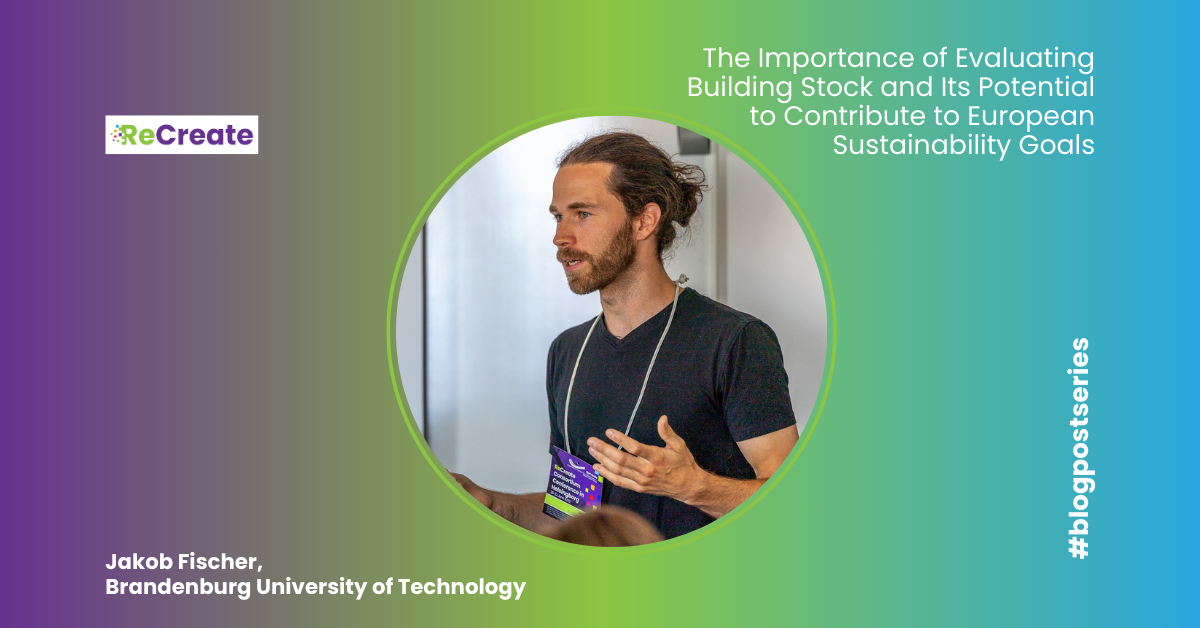
Jakob Fischer, Brandenburg University of Technology
As Europe strives to meet its sustainability targets, the construction industry’s environmental impact is under increasing scrutiny. The sector is responsible for a significant portion of Europe’s resource consumption and waste generation. A key solution lies in evaluating building stock for its potential to contribute to circular economy practices, particularly through the reuse of construction materials like prefabricated concrete components. By reducing waste and conserving resources, this approach can help achieve the European Union’s (EU) climate and sustainability goals.
Europe’s Sustainability Goals and the Construction Industry
The European Union has committed to several ambitious targets, primarily through the Sustainable Development Goals (SDGs), including Goal 9 (Industry, Innovation, and Infrastructure), Goal 11 (Sustainable Cities and Communities), and Goal 13 (Climate Action). These goals promote building resilient infrastructure, reducing waste in urban environments, and taking urgent action on climate change.
In parallel, European policies such as the Circular Economy Package, the EU Waste Hierarchy, and the European Green Deal aim to curb resource extraction and promote material reuse. The building construction industry, as one of the largest consumers of resources and generators of waste, is central to these efforts. By recovering reusable concrete elements from existing structures, the sector can reduce its carbon footprint and contribute to Europe’s climate neutrality goal by 2050. The ReCreate project is developing numerous implementations to achieve these contribution goals.
Assessing Building Stock for Reuse
Evaluating building stock involves analyzing existing structures to identify materials that can be reused in new construction projects. This is especially important as Europe’s built environment contains vast amounts of materials, particularly concrete, that can be repurposed instead of discarded. The work package 1 of the ReCreate project is developing an analysis and mapping of existing precast concrete systems and elements.
Prefabricated concrete components, which are common in many buildings, offer substantial potential for reuse. These modular elements can be removed, inspected, and repurposed in new projects, reducing the need for energy-intensive production of new materials. Since concrete production is responsible for a large share of carbon emissions, reusing elements as a whole can significantly lower the environmental impact of the construction industry. Emission reductions of up to 98 % in comparison to virgin material prefabricated concrete elements, can be saved by reusing existing elements.
Urban Mining and the Circular Economy
Urban mining is a key element in transitioning towards a circular economy, where resources are reused rather than discarded. Buildings, especially those built in the mid-20th century, contain prefabricated concrete components that are still in good condition and suitable for reuse. Rather than allowing these materials to become waste, urban mining enables their recovery, helping reduce construction and demolition waste (C&DW).
C&DW represents nearly 40% of the total waste produced in the EU, underscoring the pressing need for robust waste management strategies. By reusing concrete elements as a whole the construction industry can contribute to a significant reduction in CO2 emissions. With concrete production accounting for up to 8% of global carbon emissions, any reduction in its demand has a meaningful impact on climate change mitigation.
Overcoming Challenges in Building Stock Evaluation
While the reuse of building components offers significant sustainability benefits, several challenges remain. On the one hand the structural and architectural integrity of reusable concrete elements have been testified and is being proven within the ReCereate project, however no market for reused elements has been developed yet, which could satisfy the demand of sustainable re-construction. Hence, the working packages 1 and 6 with the deliverable 6.2 will give an overview of the distribution and amount of defined elements in the existing building stock.
Another challenge is to evaluate the needed information for exact types of elements in existing buildings from national building stock databases. With the support of building owners (e.g. providing information on their building stock), reviewing literature and archives on construction/production activities in the past and assessing the current and future demolition rate, a more accurate assessment of the building stock will be investigated.
A centralized database tracking reusable materials across Europe could further enhance urban mining efforts. By cataloging the types, quantities, and conditions of reusable components, such a system would allow construction companies to plan projects more efficiently, ensuring that recovered materials are utilized effectively. Parts of these efforts will be achieved within ReCreate.
Conclusion
The systematic evaluation of building stock and the adoption of urban mining practices can contribute significantly to Europe’s sustainability efforts. Reusing materials like concrete supports SDG 9 by promoting resource-efficient infrastructure. It also aligns with SDG 11 by reducing urban waste and improving resource management, while contributing to SDG 13 by helping reduce the carbon emissions associated with new construction.
Achieving this requires collaboration between policymakers, industry professionals, and researchers. Governments can implement the regulatory frameworks and incentives needed to make reuse the norm, while construction professionals must adopt new approaches that prioritize resource recovery. Also building owners should be sensitized, to regularly evaluate their building stock, keeping track of their own ‘urban mine’ and step forward to interested planners and stakeholder in the construction industry with their upcoming potential of deconstructable and reusable concrete elements.
The future of Europe’s construction industry is circular, and evaluating building stock is a key step in realizing this transformation.

